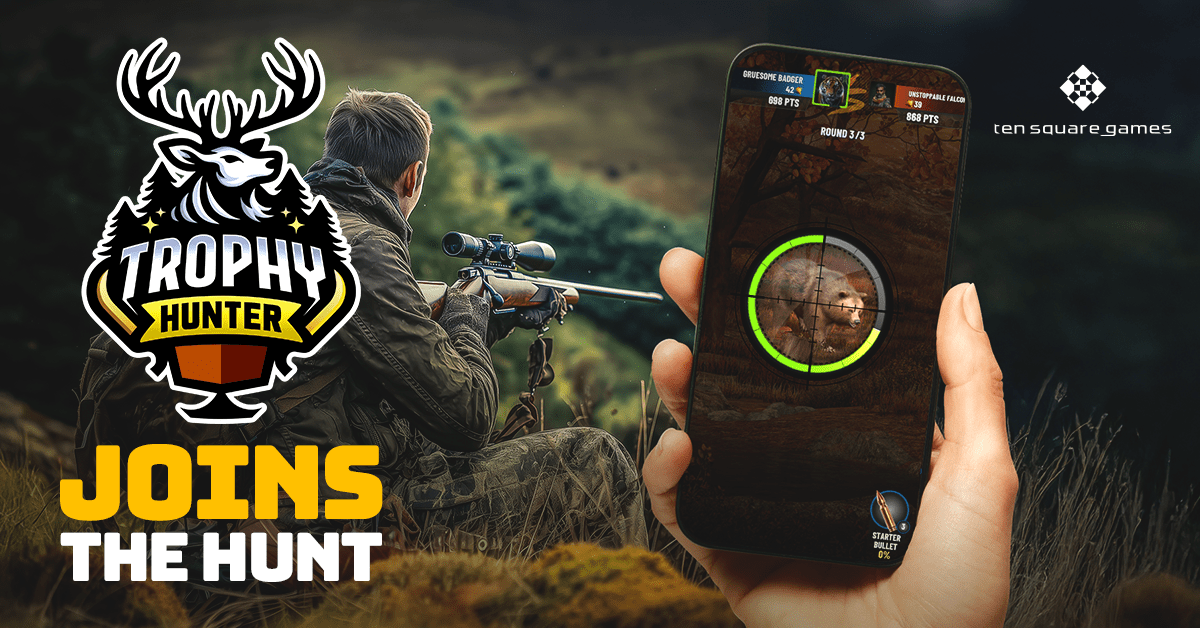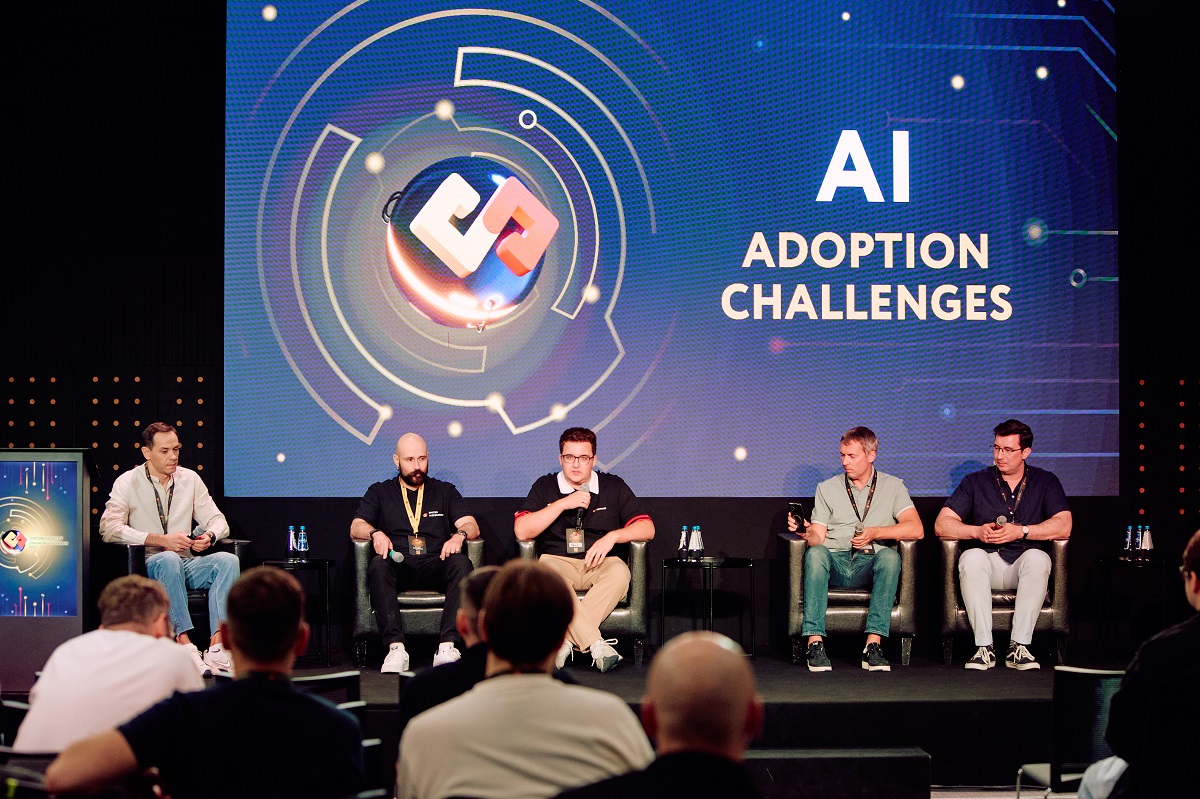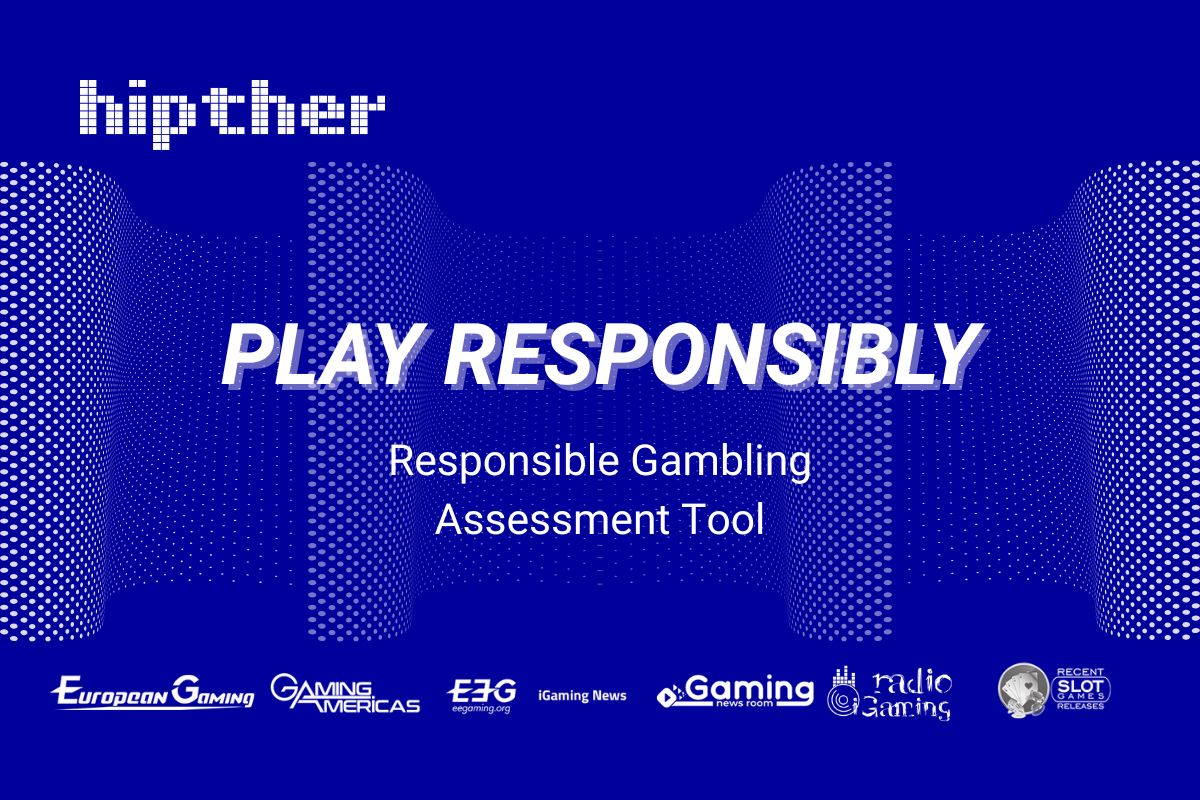Latest News
Tackling latency in next-gen gaming

Mathieu Duperré, CEO at Edgegap
Anyone that’s played a video game online has almost certainly experienced some kind of lag and connectivity issues. Despite huge infrastructure advances in the last few decades, latency remains a constant thorn in the side of gamers and detracts from the real-time experience that’s expected today.
Delivering a consistent experience to gamers playing on different devices with varying connection speeds – many of which are separated by thousands of miles – is a complex challenge. Massively popular online games like Roblox and Fortnite are just two of the many games which have benefited from years of investment into infrastructure in order to support millions of concurrent players. As the below chart from SuperJoost shows, multiplayer and online gaming is becoming the preferred way to play games amongst the most active gaming demographic, with all the technical challenges that this creates.
Games which can be played seamlessly across mobile, PC and console (so-called cross-play games) are also pushing the limits of what current internet infrastructure can deliver. Add in a new generation of streaming cloud gaming services like Stadia, Blacknut Games and Amazon’s Luna – plus Microsoft’s Game Pass and Sony’s revamped PlayStation Plus service, and you can see how the promise of console-quality performance over a broadband connection risks overloading networks that were never designed for this level of gaming.
So how can game companies, telcos and ISPs deliver on the performance promises being made to gamers? That’s where edge computing comes in.
Lag, latency and the Edge
When talking about latency it’s important to make it clear exactly what we mean. Latency refers to the amount of time it takes for game data to travel from one point to another. From the gamer’s perspective, it’s the delay between their command and seeing it happen in-game. How much latency a gamer experiences is dependent on the physical distance the data must cross through the multiple networks, routers and cables before it reaches its destination.
To use an extreme example, NASA’s Voyager 1 has made it about 14.5 billion miles from our planet so far, and it takes about 19 hours for its radio waves to reach us. Here on Earth, your latency is (hopefully) measured in milliseconds rather than hours; and gamers need around 30ms for the most optimal performance. Anywhere above 100ms can lead to noticeable lag and a frustrating experience.
This is where Edge computing comes in. As the name implies, Edge computing brings computation and data storage closer to the sources of data, placing it on the edge of the network where the performance gain is the greatest. As you’d expect, reducing unnecessary travel drastically speeds up the process providing an almost lag-free experience.
More players equals more chance for latency to be a problem
In the early days of gaming, local, couch play was part and parcel of the gaming experience. Today, a game where hundreds or even thousands of players are in the same session is nothing out of the ordinary, and there are Battle Royale games now, a whole genre of games where a hundred or more players are whittled down to a single winner.
The sheer scale of some online games dwarfs many of the most popular streaming services. Whilst Netflix remains the most successful streaming video site with 222 million subscribers, kids game Roblox has 230 million active accounts and Fortnite has over 350 million registered players. So if we assume these games reflect a growing trend, the demand on server networks is only going to increase, and gaming companies will have to look for more innovative solutions to continue meeting demand.
Cross-Platform
The ability for gamers on different devices and platforms to play and compete together is becoming an increasingly common feature of AAA multiplayer games like Apex Legends, Fornite and Call of Duty. EA Sports recently confirmed that FIFA 23 will be joining other heavy hitters in exploring cross-platform play. Considering the large amount of games on the market, and the various game modes for each game, studios are looking at crossplay to increase the amount of players who can play together. One of the main driver is to lower matchmaking time and prevent players from having to wait hours before opponents are ready to play with them.
From a latency perspective, different infrastructure across platforms means lag and downtime are far more likely. When it comes to cross-play, studios can’t use P2P (peer-to-peer) since console vendors don’t support direct communication (i.e. an Xbox can’t communicate directly with a playstation). On top of that, P2P may be limited by player’s home network (restrictive natting for example). That’s why studios typically use relays in a handful of centralised locations. Relays are seen as cheaper than authoritative server. They although have large flaws like making it harder for studios to prevent cheating, which is becoming more and more important with Web3 & NFT. This causes higherlatency since traffic needs to travel longer distances between players. For example, when Apex Legends went cross-platform, players were inundated with frame rate drops, lags and glitches.
Edge computing allows studios to deploy cross-play games as close as possible to their players, significantly reducing latency. Which can negate some of the delay issues around differing platforms.
VR and the Metaverse
Despite hitting shelves in 2016, VR is only now slowly making its way into mainstream gaming. Advances in technology have gradually improved the user experience, while also bringing the price of hardware down and closer to the mass market – not to mention the metaverse bringing renewed attention to the tech. But latency issues still present a serious hurdle to wider adoption unless it’s addressed.
Latency impacts the player experience far more in VR than in traditional gaming as it completely disrupts the intended immersive experience. A 2020 research paper found latency of over 30-35ms in VR, had a significant impact on players’ enjoyment and immersion, which was far lower than acceptable margins on a controller. But when it comes to the metaverse, achieving this might not be enough. Latency between headset and player has to be sub 5ms to prevent motion sickness.
In a recent blog, Meta’s VP, Dan Rabinovitsj, explained that cloud-based video games require a latency of around 75–150ms, while some AAA video games with high graphical demand require sub 35ms. Comparatively, Rabinovitsj suggests metaverse applications would need to reduce latency to low double or even single digits.
For better or worse, we’ve seen glimpses of what the metaverse has to offer already. Decentraland’s metaverse fashion week gave major brands like Dolce & Gabbana an opportunity to showcase virtual versions of their products. But attending journalists reported that the event was fraught with lag and glitches.
Gamers are a fickle bunch, so early adopters will simply move back to other games and platforms if they have poor initial experiences. Google’s Stadia promised to revolutionise gaming, but its fate was sealed at launch as the platform simply couldn’t compete with its competitors’ latency. Today, Google has ‘deprioritised’ the platform in favour of other projects.
If the metaverse goes to plan, it should encompass a lot more than traditional gaming experiences. But if it’s going to live up to players’ lofty expectations, akin to Ready Player One, more thought needs to be given to scalable and optimised infrastructure.
Unlocking next-gen gaming
The pace at which modern gaming is evolving is astounding, making the components discussed here work lag-free and as players expect will be a huge undertaking, and even more so when developers attempt to bring them all together in the metaverse.
The issue of latency may be less headline-grabbing than virtual fashion shows, NFTs and Mark Zuckerberg’s slightly unsettling promotional video, but the ability to seamlessly stitch all of these elements together will be critical in making the metaverse live up to expectations, and therefore, to its success.
Powered by WPeMatico
Gaming
Global release of Trophy Hunter – test your skills in the next evolution of hunting games

On July 3, 2025, Trophy Hunter – the latest game developed by the Ten Square Games team – launched globally across major markets. With this title, the company expands its presence in the fast-growing hunting game segment, where it already has solid experience. Trophy Hunter is the third Ten Square Games project in this genre – this time designed as a skill-based game, offering an accessible yet competitive experience for a broad player base.
“- Ten Square Games was one of the pioneers in the mobile hunting games segment. Since the release of Hunting Clash, the market has grown significantly, and players’ expectations have evolved. Trophy Hunter is our response to those changes – a skill based game that emphasizes fast-paced gameplay, reflexes, and strategic decision-making. We’re building on a world we know well, but offering a new style of play that opens up fresh growth opportunities,” says Jakub Noganowicz, Product Owner of Hunting Clash and Trophy Hunter.
About Trophy Hunter
Trophy Hunter is a hunting game designed for players who enjoy quick, dynamic gameplay and competitive PvP action. Its core mode features three-round duels where precision, reaction time, and decision-making under pressure matter most – rather than exploration or resource management. Players can upgrade their personal base (Hunter’s Lodge), customize weapons, and compete in a structured league system.
“- The launch of Trophy Hunter is a test for both an alternative gameplay model and a more hybrid approach to monetization. We see this moment as the conclusion of the game’s first development phase. Now begins the most important stage – one driven by player feedback. The success of the project will depend not only on how the game is received but also on our ability to scale the title and consistently grow its player base,” says Andrzej Ilczuk, CEO of Ten Square Games.
Trophy Hunter follows a free-to-play model with microtransactions that let players upgrade weapons and ammo. It also features rewarded video ads**, allowing revenue generation from non-paying users. Thanks to hybrid monetization and a lower entry threshold, Trophy Hunter is aimed at a broader audience. Its lower cost per acquisition offsets the lower ARPU* compared to other Ten Square Games titles. The hybrid business model allows room for scalable growth and expanding the game’s reach.
From prototype to global release
Development on Trophy Hunter began in Q1 2024. In the final production phase, the core development team included 10 directly involved contributors.
In late June 2025, as part of pre-launch preparations, Ten Square Games removed the test version of the app from Google Play and the App Store, replacing it with the final version and opening preregistration. Over 500,000 players only on Google platform used the opportunity to ensure the fastest possible access to the game on global launch day. Those who preregistered received an exclusive in-game reward – a replica of the Beretta BRX1 rifle and 10 rounds of special ammunition. This was made possible thanks to Ten Square Games’ collaboration with the globally recognized Beretta brand, originally established for Hunting Clash.
What’s next
At launch, the game includes 9 playable arenas. The release marks the beginning of a new development chapter for Trophy Hunter. The roadmap includes progressive content expansion and ongoing testing of the game’s global scalability. If this proves successful, future updates will bring more arenas, new gameplay modes, a LiveOps system, Battle Pass, and additional features to boost player engagement and expand challenge variety.
* ARPU – average revenue per user
** Rewarded video – an ad format where players voluntarily watch a video ad in exchange for an in-game reward.
The post Global release of Trophy Hunter – test your skills in the next evolution of hunting games appeared first on European Gaming Industry News.
Conferences in Europe
SOFTSWISS Developer Conference Highlights Engineering Strength in High-Load iGaming

SOFTSWISS, a global igaming software provider, has hosted one of its largest internal developer conferences. The closed-door event in Warsaw brought together over 100 product and engineering specialists to share their experience on building robust iGaming infrastructure, scalability, and technology resilience.
Designed to accelerate cross-functional collaboration and drive technical excellence, the conference agenda featured ten selected talks focused on mission-critical topics such as platform architecture, high-load performance, risk management, and structured thinking – all vital to the stability and success of modern iGaming operations.
“Behind every seamless gaming experience is a robust, well-architected platform that can perform under pressure,” said Sergey Kastukevich, Deputy Chief Technology Officer at SOFTSWISS. “This conference reflects our belief that high-performance technology is the foundation of long-term operator success. It’s where ideas are tested, knowledge is shared, and better systems are built.”
The speaker line-up was curated from a highly competitive pool, with three applications submitted for every available slot. The final agenda reflected both the technical depth and practical expertise required to operate at scale in the iGaming industry, offering value beyond core engineering topics.
“Most of the topics revolved around strategic challenges aimed at improving efficiency, stability, speed, cost, and process optimisation. That defines who we are as a company: we are a global tech company with 16 years of experience, our products are mature, and what matters now is how we process large volumes of data reliably and build scalable knowledge bases. These are applied, enterprise-level issues,” highlighted Stanislau Biarkovich, Principal Architecture Manager and one of the internal organisers of the conference.
Among the standout sessions were:
“An Economist’s Guide to Architecting and Building Web-Scale Platforms” – a talk connecting infrastructure decisions with economic principles, delivered by Brian Azzopardi, Head of Engineering.
“How Risk Management Techniques Could Make Business – and Your Life – More Effective” – a session by Sergei Laiter, Risk and Process Manager, highlighting the strategic thinking behind resilient tech systems.
Attendees included engineers and product leaders from SOFTSWISS offices across Europe.
As part of its broader commitment to innovation and community engagement, SOFTSWISS also participated in Code Europe 2025, one of the continent’s top tech festivals. Representing the company on the public stage, Artem Bychkov, Deputy Chief Security Officer, delivered a keynote titled “Groundhog Day: Lessons from 20 Years in Security”, shedding light on recurring cybersecurity blind spots and their impact on digital business resilience – including in iGaming.
With demand for stable, scalable, and secure platforms at an all-time high, SOFTSWISS continues to invest in its global engineering culture to ensure that its partners – including operators, aggregators, and affiliate programs – can grow with confidence.
About SOFTSWISS
SOFTSWISS is an international technology company with over 15 years of experience in developing innovative solutions for the iGaming industry. SOFTSWISS complies with a number of gaming licences and provides comprehensive software for managing iGaming projects. The company’s product portfolio includes the Online Casino Platform, the Game Aggregator with over 30,000 casino games, the Affilka Affiliate Platform, the Sportsbook Software and the Jackpot Aggregator. In 2013, SOFTSWISS revolutionised the industry by introducing the world’s first Bitcoin-optimised online casino solution. The expert team, based in Malta, Poland, and Georgia, counts over 2,000 employees.
The post SOFTSWISS Developer Conference Highlights Engineering Strength in High-Load iGaming appeared first on European Gaming Industry News.
Compliance Updates
HIPTHER Launches Responsible Gambling Assessment Tool Across Its Global Gaming Media Network

HIPTHER, a leading media and events brand in the Gaming and Tech industries, has launched a new Responsible Gambling Assessment Tool, now live across all of its gaming media platforms. This quick, anonymous self-test is designed to help players better understand their relationship with gambling, encouraging safer play through awareness and early self-checks.
The “Play Responsibly” tool is backed by clinical research and built with user privacy at its core, based on the globally recognized Problem Gambling Severity Index (PGSI) – a 9-question framework used to assess gambling risk levels, from low to moderate or high.
No sign-up needed. No Cost. No data collected. No Judgement. Just honest insight.
Whether you’re simply curious or looking to take a proactive step toward support, this free tool delivers instant results and practical next steps – all in under two minutes.
Key Features:
- Completely anonymous – no registration or personal data required
- Instant results with tailored guidance
- Available in 5 languages
- Mobile-first and accessible across all devices
- Fully GDPR compliant
Designed to meet WCAG 2.1 AA accessibility standards, the tool ensures a smooth and inclusive user experience for everyone. With multilingual support and local resource integration, it helps diverse populations connect with trusted support networks in their region.
“While our media platforms primarily serve the B2B side of the industry, we know they’re also visited by players looking for insights and updates. That’s why it’s important for us to go beyond headlines and contribute real tools that support safer play. This assessment is one small, meaningful step toward that.” – Zoltán Tűndik, Co-Founder and Head of Business at HIPTHER.
Take the assessment today and share it with your community.
Because gambling should always be safe, informed, and fun.
Try it now on any of HIPTHER’s gaming media platforms:
By launching this tool, HIPTHER reaffirms its ongoing commitment to promoting transparency, responsibility, and player well-being in the global gaming industry. Together with our partners and audiences, we continue working toward a safer, more informed future for players everywhere.
The post HIPTHER Launches Responsible Gambling Assessment Tool Across Its Global Gaming Media Network appeared first on European Gaming Industry News.
-

 Central Europe7 days ago
Central Europe7 days agoGerman Federal Government Significantly Increases the Budget for Games Funding
-

 California State Assemblymember Avelino Valencia7 days ago
California State Assemblymember Avelino Valencia7 days agoNew Bill in California Could End Online Sweepstakes Gaming
-

 Compliance Updates7 days ago
Compliance Updates7 days agoNew Initiative from DI Council Aims to Enable Betting on Professional Sports
-

 Conference7 days ago
Conference7 days agoAmatic Industries Showcased its Latest Innovations at Peru Gaming Show 2025
-

 Africa7 days ago
Africa7 days agoNew Governing Board of the Gaming Commission of Ghana Sworn in
-

 Assist6 days ago
Assist6 days agoOdds Assist Launches Redesigned & Rebuilt Odds Assist Pro Providing +EV Bets, Arbitrage Bets, & Odds Comparison Tools for Sports Bettors
-

 Latest News7 days ago
Latest News7 days agoWeek 26/2025 slot games releases
-

 Compliance Updates7 days ago
Compliance Updates7 days agoNick Rust to Step Down as Chair of UKGC’s Industry Forum


















